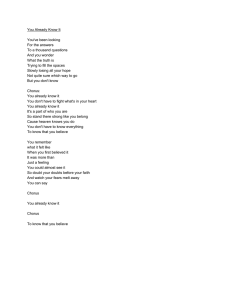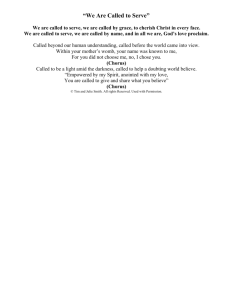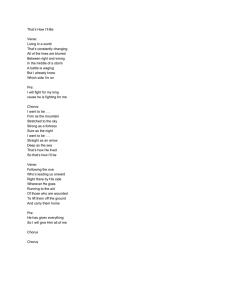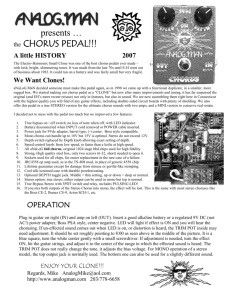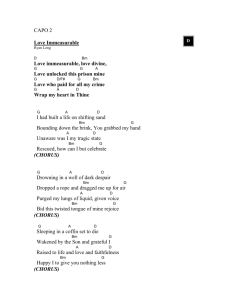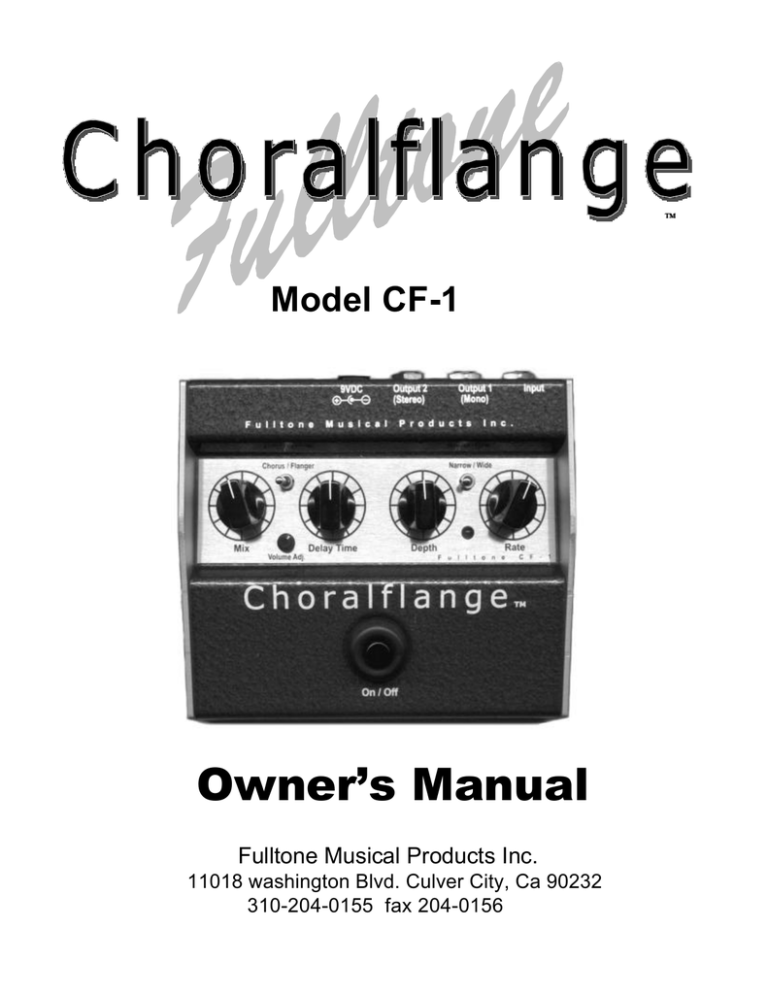
Model CF-1
Owner’s Manual
Fulltone Musical Products Inc.
11018 washington Blvd. Culver City, Ca 90232
310-204-0155 fax 204-0156
Page 1
Congratulations on your Purchase of the Fulltone Analog Stereo
Choralflange
TM
As a professional musician and studio guitarist, I spent many
years not being able to find a Chorus or Flanger that was good
enough to stay on my pedalboard for any length of time.
All the pedals I tried were either too murky, too hi-fi, distorted
horribly when the strings were hit hard, lacked true bypass, were
too noisy, or lacked the features and flexibility to allow me to
create my own signature chorus or flange sounds.
Chorus can be a wonderful sound, but if you’ve ever tried a Digital
(including digital modeling) unit you might not give it a second
listen. Analog circuits, when done right, can offer unexcelled
warmth and shimmer that augments, instead of detracts from,
your signature sound. Flangers have always gotten a strange
metallic feedback when pushed to extremes, making them little
more than an annoyance and the flanging available in chorus
pedals always seemed at best an afterthought.
After 10 months of extensive research and development we now
offer the Choralflange TM, which I designed for discriminating
Guitarists and Bassists everywhere. Offering a wide range of
fantastic chorus, flange, and rotating speaker sounds, together
with tons of flexibility, top-notch components and construction, it’s
the first pedal ever to offer a switchable choice between truebypass or buffered outputs. From the custom aluminum
hammertone-green enclosure, to the Gold-Plated IC sockets, to
the acid etched faceplate, there’s lots of love put into this
thing…Play on!
Michael Fuller
President / FMP Inc.
2002
FMP Inc. All rights Reserved
Choralflange Features
Page 2
TM
Mix knob: this sets the balance between straight (unaffected) guitar and the effected
sound. Clockwise (CW) yields more effect, Counter Clockwise, (CCW) more guitar.
Chorus / Flange toggleswitch: chose between the two modes of operation. Both
function in either Mono (1 amplifier) or Stereo (2 amps) operation.
Volume Adj. trimmer: this only affects the volume when the effect ON/OFF footswitch is
in the “ON” mode. Why? Because there can often be a large difference in the level
between the bypassed and “ON” modes depending on your settings, particularly when
operating this chorus in stereo. (Two amplifiers) The Volume Adjust is crucial for
getting the right balance so that there is not a Boost or Cut unless you desire.
Delay Time knob: allows for Delay lengths ranging from 1 to 50 milliseconds. The
length of Delay times determines the amount of Vibrato present in the chorus, and the
affected frequencies of both the chorus and the flange modes.
Depth knob: this controls the saturation or “wetness” of the “ON” sound, and along with
the Mix knob, gives this pedal the ability to sound vintage-thick, extremely transparent,
or anything in-between.
Narrow / Wide toggleswitch: set to Narrow, the affected frequency bandwidth will be
approximately 1 Octave. Set to Wide, the affected frequency will be approximately 2
Octaves. This range is also affected by the chosen Delay Time setting.
Rate knob: controls the speed of the modulation and is reflected in the flashing LED
positioned next to it. Slower speeds are generally used for Chorusing and Heavy
Flanging sounds. Faster speeds are generally used for Leslie and wild chorus/vibrato
sounds
Input Jack: plug guitar or Bass into this, remember to unplug when not in use to
prolong Battery Life. Warning: this device is designed for “normal” output Pickups and
not Super-Hi-Gain ones like the “LiveWires”, EMG85’s, etc. Use of these could overload
the input of the Choralflange. Lower gained PU’s equals better tone anyway IMHO.
Output 1: use this for mono (single amp) operation.
Output 2: use this only in conjunction with Output 1 when stereo operation is desired.
Caution! Always make sure there are no grounding problems when using multiple amp set-ups.
Failure to maintain proper ground can cause serious injury or even death!
DC Jack: this is a standard 2.1mm Barrel Jack connector, and is configured (like most
effects) with the Center Pin being Negative. It is HIGHLY recommended that you use
only the Fulltone FPS-1 because it is regulated and the optimum tones in this pedal are
achieved with exactly 9.0 volts…fresh batteries are often 9.5+volts and the flanging
sounds may be affected.
Internal Adjustments: there are NO internal user adjustable parameters in this pedal.
There are trimmers that are set by us and are not to be touched, you will ruin the pedal.
2002
FMP Inc. All Rights Reserved
Page 3
Battery Hatch: to access this, remove (by hand) the 2 rubber feet/screws and lift hatch
up and out of the way. It is recommended that you use an alkaline 9-volt battery to get
the maximum 3-6 hours usage out of this effect. Unlike with most Fuzzes and Wah’s, I
notice no difference in sound between the alkaline and carbon-zinc batteries.
Buffered/TrueBypass DIP switch: can be accessed from this opening as well, and
there is a picture diagram on the back of the battery hatch showing the way to set it for
either True Bypass or Buffered Outputs.
True Bypass: set to this if you want a pure, unencumbered Hi-impedance signal (when
unit is off) that won’t affect your other pedals. This mode cannot be used for stereo
operation, as the #2 output jack is disconnected in this mode.
WARNING! You MUST unplug the guitar from the input jack when switching the
Buffer/Bypass switch. Failure to do so will damage your pedal and void your warranty.
Use this setting for TrueBypass
Buffered Out: use this if you are running in stereo, or if you have long cables running to
the amp, as our hi-fi Low impedance out drives those long cables and sounds very
natural, unlike other Buffered-out pedals. This mode can be used for both mono and
stereo operation.
Use this setting for Buffered Out
Specifications
Weight: 1.3 lbs.
Height: 1.75” (at highest point)
Width: 5.9” (as pedal sits in front of you, Left to Right)
Depth: 5.0” (front to back)
Input impedance: 240k ohms
Output impedance: 100k ohms
Power consumption: no more than 35 ma. Power requirements: 9 volts DC
*Regulated 9.0VDC / Neg. Center pin adapter (included)
*9 volt battery not included.
Battery life expectancy: 2-3 hours w/ Carbon Zinc, 3-6 hours with Alkaline.
Housing: aluminum, thickness 90 mil. Bottom plate anodized,Top section painted
hammertone Green
Warranty:
This product is warrantied for 5 years from date of purchase to the
original owner. Warranty does not cover the Battery, damage due to misuse, or
modifications/repairs done by anyone other than Fulltone Musical Products Inc.
We will determine whether a repair is warranty or otherwise, and customer is to pay all
shipping costs whether warranty-related or not. Do NOT return pedal to store for
repairs, contact us at 4220 Glencoe Ave. MDR, CA 90292 before sending
anything, and always include a note with specified funds, info, and return address.
Fulltone Musical Products Inc. assumes no liability for any injuries or death resulting
from the use of this product by itself or in conjunction with other products.
2002
FMP Inc. All Rights Reserved
Page 4
Choralflange Settings
TM
This page contains some suggested settings to achieve some very popular Chorus,
Flange and Leslie-Like sounds. Notice that the faceplate markings on your Choralflange
have 12 lines that correspond to the face of a clock. This Clock reference is a good way
for you to remember your favorite settings, and feel free to tweak your own sounds and
note them on the Blank faceplates included later on in this section. You will see the
Terms “CW” (clockwise) and “CCW” (counter clockwise) use in the descriptions of
sample settings.
Vintage-Style Chorus: requires longer delay
times, which introduces the up and down PitchBend (Vibrato) to the sound. The longer (CW) the
Delay Time, the more severe the Pitch change
will be. At these heavier Mix and Depth settings,
it may be necessary to reduce (CCW) the
Volume Adjust so that the “on” volume is not
way higher than the Bypassed sound.
Vintage-Style Chorus
Transparent Chorus: when you want subtler
chorus, reduce the Mix and Depth (CCW) and
reduce the Delay Time (CCW) which will start to
remove the modulation/pitchbend properties from
the sound. It may be necessary to increase the
Volume Adjust level (CW) so that there is not a
difference between “Off” and “On” levels.
Transparent Chorus
FAT Effect: Because the unit’s Rate control
is capable of such a slow speed (full CCW), you
can acheive a fattening, slight doubling effect without apparent modulation...sounds great with heavy
Distortion!
This is most useable with when the Band Control
set to "Narrow" and "Volume Adj." set higher (CW)
Doubling Effect
2000
FMP Inc. All Rights Reserved
Page 5
Heavy Flanging: is best achieved with a slow to
medium (CCW) Rate settings, with High (full CW)
Depth and Mix settings. It may be necessary to
reduce (CCW) the Volume Adj. settings unless a
significant level increase is desired.
Tip: place a good overdrive/distortion pedal
before the Choralflange to experience amazingly
thick Flange sounds!
Rotating “Leslie” Speaker: sounds can be
simulated with a little tweaking. The Mix and
Depth settings should be set low (CCW) to keep
the effect from becoming overbearing.
This sounds great in both mono and stereo
operation. You may need to increase the Volume
Adj. settings (CW) to compensate for the lower
levels caused by the reduced Mix and Depth.
You can get some wild over the top sounds
(popularized by Michael Landau) by slightly
increasing the Mix and Depth to around 12
‘O’clock, and try lowering the Rate to about
11’O’clock.
Heavy Flanging
Rotating Speaker
2002
FMP Inc. All Rights Reserved
Page6
User Settings Template
Print this out to save some of your favorite sounds.
2002
FMP Inc. All Rights Reserved

